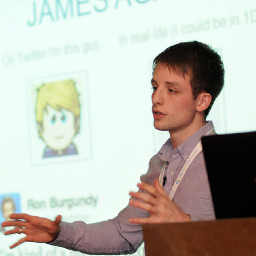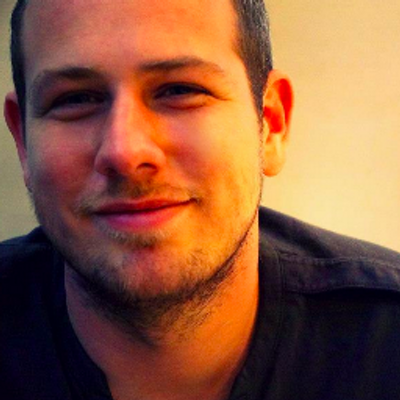Editor's Note: Linkarati has since launched the 2014 edition of this post. If you're looking for the latest list of successful strategies, tactics, and creative link building twists make sure to check it out!
Welcome to Linkarati!
To kick off the launch of the Linkarati blog, where we'll cover all things link building, we wanted to gather as many expert, influential link builders as possible. And what better way to gather link builders than have them tell a link building story from 2013?
I want to thank each and every person featured here for being generous with their time and experience. As an SEO company ourselves, we were absolutely floored at such an outpouring of response from the SEO community.
We hope you enjoy reading this half as much as we enjoyed putting it together.
(To hell with the contributor list, just get me to the damn post!)
Contributors (in order contribution was received)
- Teresa Lopez
- James Agate
- Takeshi Young
- Steve Morgan
- Roger Montti
- Simon Penson
- Jayson DeMers
- Julie Joyce
- Jon Ball
- Brian Dean
- Bill Sebald
- Todd McDonald
- Spencer Haws
- Giuseppe Pastore
- Paul Teitelman
- Venchito Tampon
- Dan Petrovic
- Casie Gillette
- Jason Acidre
- Paddy Moogan
- Dan Kern
- Matthew Green
- Matt Gratt
- Lewis Sellers
- Don Rhoades
- Sunny Minorics
- Peter Attia
- Kyle Sanders
- Danny Ashton
- Mark Johnstone
- Wiep Knol
- Adam Heitzman
- Gisele Navarro
- Anthony D. Nelson
- Sanket Patel
- Max Prokell
- Steve Martin
- Stacey Cavanagh
- Cody Cahill
- Richard Marriott
- Dana Loiz
- Patrick Hathaway
- Peter van der Graaf
- Russ Jones
- Oliver Mason
- Joel Chudleigh
- Rohit Palit
- James Norquay
- Ken Lyons
- Pratik Dholakiya
So, without further ado, let's launch into the responses:
What's a successful link building story you can share from 2013?
The best link I ever made came from working with the lifestyle magazine Real Simple on a post about simple and affordable bridal looks. I started working with Kate from The Small Things Blog on a great tutorial for brides looking for an affordable wedding hair styles using hair clips. She had a great experience working with us and her community responded with tons of engagement.
It turns out that Kate works with Real Simple and they were looking for some easy bridal looks to write on. We sent her one other hairpiece and they ended up publishing my post. This post was huge for brand awareness and it is still placed prominently on their site.
When outreach gets out of hand
We get a lot of nice links for our clients and I am sure the other individuals contributing to this piece will provide lots of good stories about how they got great links for themselves or their clients as well.
However, my favourite link building story serves as more of a cautionary tale. I can look back and laugh about it now but at the time I was seriously frustrated about the whole thing…
Back in 2012, I had a client who I was helping to connect with sports and outdoor activity publishers. The relevance was there and by and large the response was positive (and very effective).
There was one publisher though that I really wanted to get a link from because I knew there would be that gravitas for the client of being featured and there would almost certainly be some ongoing referral traffic.
This publisher was based in the US but covered their sport internationally. Now I knew I was chancing my arm to a certain extent offering to contribute a piece to their website (and magazine) about goings-on in this sport local to me since I certainly wasn’t proficient in the sport BUT I was local and figured I’d be able to research the rest and still be providing value that way.
The initial response to my outreach email was positive. They were delighted I’d got in touch and wanted me to write the initial coverage for an upcoming event that was taking place about an hour from me. And they were offering to pay me to do it.
I kicked back feeling like the smartest guy in the room; “I’m going to get a link for this client and then not even have to charge the client because the publisher is going to pay me.” I paused, double checked, then triple checked that the publisher would be happy to include details of the client I was working on behalf of because I felt there was definitely a strong relevance – they agreed.
The paperwork arrived and also entry passes for the event itself, I though “Oh they’ve sorted me a media badge or something”… Nope, it was a participant’s entry badge. Apparently agreeing to cover event meant I was going to take part and write it up afterwards.
I thought well it is a good link, they’re paying me, it’ll be a bit of fun and frankly I’ve come this far. How hard can this event really be?
Now I’m a fit and healthy guy but let me tell you it nearly killed me.
The event covers a distance of about 400 miles and obviously it is split into different legs with different team members tackling the different challenges.
It was brutal.
Anyway, we finished, I wrote up the adventure and submitted the piece. It was due for publication about a month afterward I believe. They sent me a copy of the magazine. Not a single mention of the client. I must have re-read the article 10 times to check I wasn’t missing something, I even flicked to the back to see if there was a mention elsewhere. Nada.
Later that week I got an email to say it had been cut from their online publishing schedule as well due to lack of space (do websites have a fixed amount of space for editorial?!!). Gutted.
Were they trying to screw me? No not at all. They paid up as agreed, I had a bit of fun, they got their piece and it is just the way old-school publishers work, things get cut, the person you deal with doesn’t necessarily have the authority to approve your requests and it’s the nature of the beast.
Let this serve as a cautionary tale though that when you are going for the big links, talking to ‘real’ publishers, the dynamic is very different – they don’t always understand what you are trying to achieve and many know they hold the cards since you are playing in their kingdom.
It hasn’t put me off reaching out to these kinds of publications or encouraging my team to do so but be VERY careful what you sign yourself up for!
Here’s one of my favorite link building tactics:
Google+ is a bonanza of link building opportunities right now. In particular, Google+ Communities make it REALLY easy to get dofollow links from high authority pages. Many of the most popular Communities have high PageRank, in the 5 or 6 range, so these are significant links.
Now, you could just post your link to these Communities, but many of them are heavily moderated and frown upon people dropping external links. What you can do instead is find high authority Communities and regularly post in them. Many of the most popular Communities (you can find a list of the top Communities at circlecount.com) are about images and humor, so this can be as simple as regularly sharing your favorite memes to these Communities.
Every time you post, you get a dofollow link back to your Google+ profile, and every time that content is shared by other people, you also get a backlink. This can be done as an individual profile or with a Google+ page. Over time, your page or profile will acquire a ton of PageRank, at which point you can post whatever you want for an instant backlink.
We did this last year with our company page, posting funny images and gifs to relevant Communities, and within a few months we were able to get our Google+ page up to PR4. Now we can post links whenever we want to our page for some instant link juice!
A few months ago, I attempted my first link request by phone, which… failed pretty spectacularly and hilariously. At the time I vowed never to do it again.
However a few months later, I found an opportunity for a client of mine who’s an optician. I realised that some opticians had links to their sites from the NHS Direct Wales website, as the DA94 behemoth linked out to local health services. They were listed without a link, and even that needed an update (as it still showed their old pre-rebrand name).
There were contact form options, but they were all very confusing and not really appropriate for what I was asking. The only phone number I could find was for all general enquiries, so I reluctantly picked up the phone, thinking that it’d be a nightmare to sort out and that I’d immediately confuse the operator, who’s probably expecting people to ask health questions when a guy calls up about a link on the site…! Fortunately for me, she knew exactly what I was talking about, asked for the changes/additions, said that she’d pass them on to the relevant people and told me that it’d be live within a few hours. Including hold time, I was on and off the phone in less than 10 minutes. And while it wasn’t live within a few hours, it went live the next day. An added bonus – in addition to getting the link – was tidying up the citation, which would’ve helped their Local SEO efforts, as Map listings are a big thing for their keywords.
The reason it’s my favourite link of the year is because it’s not a readily obvious link (I didn’t realise that NHS Direct Wales listed local opticians) but it was a high quality link from an authoritative site and yet really easy to get implemented.
People are running scared because Matt Cutts said to put a fork in guest blogging for links. Some are advising that the way forward is to build a brand and be awesome. Well, that’s a given. Those are platitudes not advice. I have been actively building and promoting my own sites since 1999. I’m the moderator of the Link Building Forum at WebmasterWorld.com since 2003. I’m not an agency so I don’t care if I burn a technique. I’m going to share some real advice from my actual experience. It’s not theory or something I read. It’s something I do.
The underlying strategy I am going to share begins by acknowledging the understanding that link building is commonly understood as an SEO activity. The ROI is in ranking better. The next step is to leave that aside because there are more benefits to link building than ranking. Once you throw away the idea of link building for ranking and stop worrying if link is no-follow, you are free to pursue a wide range of opportunities for building awareness of your product, for building mindshare, for putting more traffic onto the lip of your sales funnel to circle down into your sales cart.
It works. The best example I have is of a B2B software publisher whose relevant keyword traffic was trivial. Not surprisingly, sales from their web channel were very low because keyword traffic was low. How do you build search engine traffic to a site whose most relevant keywords are barely searched on? You don’t. I set aside search traffic and focused on web traffic. I did it by building awareness and mindshare, without regard to whether a link was redirected or hidden with JavaScript and I absolutely did not ask for any particular anchor text. The process involved identifying who the buyers, influencers and researchers of the B2B product were, then identifying where online those same people could be found, making a list of what kinds of sites they were likely to visit.
Back in 2005 I noticed that a guy was making thousands of dollars per month selling products related to his viral site. I sought him out and interviewed him. His secret? Spread your propaganda. Encourage the spread of it. Spread it far and wide. He was burning through 40 Gigabytes of traffic per day, most of it through hotlinked images. He noted that while others discouraged it, he actually encouraged hotlinking because it was his plan: Spread the propaganda. In other words, build awareness. The exact same strategy that I had so much success with over and over.
Fast forward to 2014. Nothing has changed. Link building for traffic and sales works. You just have to get over the idea that link building is exclusively for ranking purposes. Once you get beyond that, you will find there are amazing opportunities for growing your business because you are no longer fettered by SEO considerations such as anchor text, PageRank, whether a link is do-follow or redirected. If you lock yourself into the SEO box you will not be able to see the opportunities like the guy I interviewed in 2005.
There is a huge promotional benefit to link building that is totally outside of SEO. The great thing about this approach is that it builds mindshare, it builds authority, it builds traffic and eventually it ends up encouraging 100% natural inbound links. Good for ranking. 100% natural.
Link building is not dead. But I wanted to publicize this approach because it’s useful. My Advanced Link Building Newsletter discusses out of the box link building strategies. If you enjoyed this and it makes sense to you then you will enjoy my Advanced Link Building Newsletter.
That’s a really tough one to choose from as we have enjoyed a few but one that really took off would be a piece of work we carried out for an ecommerce retailer we work with that had launched an innovative new product that basically utilised smartphone technology to animate clothing. As many of our team are former journalists they immediately saw the value of this for PR and dug a little deeper.
That research uncovered an even greater story; that the ‘inventor’ of the tech was actually a former NASA scientist. The outreach pitch then wrote itself and was proof, if ever it was needed, that the quality of the content and it’s exclusivity are the critical assets of any campaign.
The central sell was an interview, or ability to interview the NASA inventor, while review samples were also sent immediately after the first calls. And it worked a treat…
Because the story was so strong the ‘sell’ was actually quite straight forward and we worked through our usual digital PR process in drawing up distribution personas, a list of target niches and sites as well as our exclusive angles story bank. The result was a raft of impressive coverage from publications as far ranging as CNET, Mashable, The Next Web, Telegraph, Metro, Express, Huffington Post, various local news sites and tech new sites.
What’s more important than link building these days, in my opinion, is brand building. And a great way to build your brand is to align it with already-established and respect ones. In 2013, I was fortunate enough to become a contributor at several major online publishers, such as Forbes and Entrepreneur.com. This exposure has been wonderful for my personal brand as well as that of my business. And it just so happens that being a contributor at places like these builds inbound links. Natural link building at its finest, while not even trying. That’s what I consider to be a true win/win, and what business owners should aim for as their goal.
My biggest link building success of the past year was personal, and it was continuing to do well as an agency after a downsizing due to the loss of our biggest client. We didn’t lose any other clients and we gained a few small ones but we didn’t have to close up shop, and I’m very proud of that fact, and very grateful to my employees and clients who stuck with us during a big transition. We added in amazing new internal systems that have sped up how we do things and it’s been a tough adjustment in some ways but still, we ended the year very well. My stress level is different now, but I’m much happier managing a small group than being out of touch trying to manage a manager who was managing a large group. I’m also extremely proud of the fact that we’ve kept on doing the same things we’ve always done to build links and that we haven’t had to totally change direction.
Usually we work on hyper competitive national search terms and are constantly trying to push the boundaries what link building is and what it can do. Link building is really hard and sometimes it can get a little discouraging with moving up the SERPS.
We were hired by a local service business in San Diego in early 2013 and our team had a great time digging into local business directories and finding plain old local links for our client. In 6 weeks they ranked a solid #1 and almost nine months later they still have the #1 spot. It was great just to see a simple, straightforward link building campaign pay off so well.
It really reminded us how powerful link building is.
To date the post has generated hundreds of links has a PA of 58:
The idea for the post came when I was looking for something BIG to publish.
At the time my site had almost zero readers and I realized that publishing “5 link building tips” wasn’t going to get me anywhere.
So I looked around to see what content in the SEO space had done really well. That’s when I stumbled on this guide by Vaughns-1-pagers.com. It attempted to document Google’s 200 ranking factors. It came pretty close at 122…but I knew that someone could do better.
Someone like me
After about 6 gallons of coffee and a lot of sleepless nights, I finally racked up 200 ranking signals, including screenshots, references and explanations for each one. It was one of the most grueling things I’ve ever done.
After about ranking signal 175 it took me 30-45 minutes to find another one. Even then a lot of them turned out to be BS, so I had to scrap them.
When it was done, I knew I had something big. So big that all I needed to do was hit the publish button…
But when I woke up the next morning to field the media blitz, I was shocked to see 8 tweets (including my own), 1 comment and zero links. Ouch.
That’s when I realized that I needed to do A LOT of outreach. So I emailed around 160 people who linked to Vaughn’s guide to let them know that I created something much better.
I landed 17 high-quality links (including one from a PR5 page) from that link poaching campaign. I also used this content as part of a 500+ email broken link building campaign, which got me another 50 or so links.
More importantly, my organic search engine traffic more than doubled from that initial outreach campaign.
All in all, the post was worth the insane amount of work that went into creating and promoting it.
We did a few tactical things early in 2013 that we were proud of, and some bigger strategic things for some clients, but my favorite link building success was also one of my biggest. I developed a tactic, playing off broken link building, that I was using successfully for clients. Then I realized I would love to have a tool for just this tactic which could ideally cut out a few steps in Google. A nice simple idea, which later turned into the Outdated Content Finder. I rang my friend Mike Angstadt who pretty much built it in a heartbeat.
So thinking I was onto something, I asked for feedback among my peers. Some great additional features were recommended. Mike then coded a few of those into version 2. This version matured the value of the tool, and proved to be what SEOs were really interested in. This in turn helped the product finally get some heat. I did a little pushing, with self-authored posts from SEMrush and Search Engine Journal, but was delighted when mentions from Moz, Search Engine Land, and other great SEO sites started to come in. I was pretty excited sitting in the Mozcon audience when Ross Hudgens pulled it up on one of his slides. This all showed me people liked the tactic, they found value in the tool, and I do owe a lot of it to the great feedback I received. Giving something useful back to the SEO community was such a proud moment, which in turn also helped to bring up great traffic and boost my DA.
Such a small example, but it just goes to show that even a little market research can help shape (and improve) an existing idea, and help your assets go viral. In some niches, even the smallest idea (and investment) can have some power if you can determine it’s something your audience really wants.
While I saw a variety of tactics work in 2013 to earn quality, relevant links, my best success actually came from utilizing the broken link building tactic that has risen in popularity over the last few years.
I worked closely with a gardening community that has strong, quality content and aims to be a resource for gardeners of all skill levels. While much of their content is link worthy and they have experts that have earned links from PR, we were able to re-purpose some content that had been made defunct on a couple of government websites around water management.
Utilizing the Wayback Machine, we grabbed old versions of the content, re-worked and cited appropriately, then added a section to the site that was billed as a collection of important gardening information from around the web that had passed away (but that we felt was worth keeping).
We then utilized OSE, Majestic SEO, and Ahrefs to pull backlinks to these expired .gov pages and found a number of quality blogs, non-profits, business, and governmental sites that we could contact to let them know their links were now dead, and where they could update them to. No lying/truth bending was necessary as the content was actually valuable and we were happy to credit the sources while letting the other sites know who we were!
Our efforts results in new connections, multiple .gov links from RELEVANT pages/sites, multiple blog links and multiple links from landscaping and other businesses. Overall a great campaign that brought in some very authoritative links efficiently for a smaller site with lower brand recognition. We were also very excited for the new connections as it opened the door for new opportunities to do QUALITY guest posting (not just for the links) and connect with others over new ideas on how to grow our site’s. The combination of authoritative links, efficient development, and great new connections made it the best I was involved in in 2013.
Some of the most success I saw with link building was through the use of expired domain networks. The ability to control your own links and content is very valuable. I don’t have a specific example to share, other than to say that using private network links helped my sites immensely in 2013.
This practice of using a private network built on expired domains is working well right now, and I plan to utilize it much more in 2014.
Regarding link building, I’d say my 2013 has been a good one since I’ve been able to give a few nice spins to a tactic we all know and that’s Broken Link Building. Already in 2012 I wrote about one of the possibilities of extending the concept of “broken” to a wider category of user experience improvement, exploring what I called Hacked Link Building. In this case, instead of hunting for broken links you want to find links pointing to hacked abandoned domains and have the webmaster change them toward your site. This idea has led me, during last year, to try other new variations of BLB: first I played with Spammed Link Building (you’re looking for sites linking to pages hosting comment spam) and recently I’ve defined Dropped Link Building, to target pages linking to domains that have expired and are now parked or redirected or have changed their content. As you can see, starting from the concept of “broken” I’ve enlarged it to embrace a bigger number of situations in which a link doesn’t offer a good user experience to those who click it, and so the webmaster could be interested in replacing it with you suggested one. There’s a ton of opportunities out there, one only has to recognize them…
One of the biggest changes in 2013 was instead of hunting for good links, had to help many new clients with hunting down the BAD links! Never in my previous years of SEO/link building have I experienced such a drastic change in the way Google evaluates links. Biggest win on the year was helping a company get a manual penalty removed after their old provider (huge SEO company in Canada) failed to get it removed after two separate attempts and had basically given up hope.
Within a few days of work, I had successfully found, tracked down and evaluated hundreds of questionable links using several SEO/backlink analysis software (just using GWT is for amateurs!). Removed as many as we could and disavowed the rest. Felt great when the client called me ecstatic as he received notice through GWT that the manual penalty had been removed.
For the 10 months of improving the content assets on my blog, I’ve found success in my last year’s round-up post about the most actionable link building tip. The post got an estimated 3000 visits which took only 4 hours to complete (excluding the time to respond to each message from contributors).
How to create a successful group interview?
- Choose a topic that people would love to know and they will certainly learn the most. In my case, I selected the topic: most actionable link building tip given that people in the link building space are always looking for advices from top link building experts. Before publishing the post, I knew that many people would love to read and share it.
- Always follow up people who didn’t respond from your first outreach. They had either overlooked your message or had been busy the time you sent them emails. In my experience, responses from the follow-up would be much higher than the responses on your initial outreach.
- Combine all the contributions into one big post and reach out to all the contributors and ask if they could share the interview to their followers.
- Look for links pages related to the topic (e.g. link building). There are a few resource pages that list down link building interviews and tips. Reach out to the webmasters and ask for a mention (I used the word mention, not link).
This type of content is applicable in any type of industry (particularly if the community in your niche is in need of actionable advices from experts – e.g. how to buy a home).
I have many exciting and even scary stories of creative link acquisition, but the single most fruitful tactic has been no more adventurous than checking my inbox once per day. I judge this by both number and quality of links and the fact that they’re all organic.
Server log files collect vast amounts of traffic data including referral traffic to pages, images and documents. I observe these on a daily basis looking for opportunities. In addition to that I have structured a Google search query which returns any mentions of my name, URL or brand within the last 24 hours. By combining these two I am able to find:
- New links (any URLs which brought at least one visitor including bots)
- Image / document hotlinking including our logo
- Mentions and citations
From the above I build an asset and opportunity database. This helps me track most successful URLs and helps me decide what to write about more. Each link entry has also got a contact person attached with any notes or instructions. If a link goes missing or turns into nofollow I can touch base with the webmaster to see what happened. From time to time I’ll run into a malicious attempt and daily link checks help take quick action.
In average I see around 30-50 organic links per day (e.g. I didn’t ask for them), out of which 2-5 I’d describe as high quality citations. Those are the ones I’m really excited about and what brings me back to the tool every morning.
A client of mine is in the modular building industry and just started to put more effort into their online marketing this past year. They didn’t have much visibility outside of Massachusetts and hadn’t done much to build online relationships with other modular building companies or industry leaders. The project was pretty small but our main goal was to help them drive visibility and increase leads.
A main component of this project was improving their online visibility through link building. For months we’d send suggestions on how to connect with specific authors and thought leaders in the industry. Sometimes it would be a blog post comment or a tweet or a LinkedIn response. We even wrote a couple blog posts on the client’s site that featured specific places/people with the goal of getting their attention.
One of these targets was a top modular building blog and our goal was to get the client in front of the author, build trust, and get the site featured on his blog. After a few months of doing this, and many back and forth online conversations between our client and the author, the client’s blog was not only featured on the site, it was featured in their newsletter. Even better, additional posts were featured in subsequent newsletters.
I think this is my favorite just because it goes to show that while it may take while to make the right connections, it can really pay off. Plus, the client was super psyched!
My biggest win last year, in terms of brand marketing, was getting interviewed by BBC.
Though, that interview didn’t really result to a link, as the story where I shared my insights about the ethical issues of social media here in the Philippines was only televised (related to Paul Walker’s death, and how a local social media practitioner has taken advantage of the topic’s virality to get more clicks to his video’s ads).
On how I got the interview opportunity:
I believe it’s due to the collective effort I’ve done over the past couple of years to build my brand as an online marketer. Fortunately, they were looking for a source who is based on the location where the story they’re working on is focused (which was the Philippines).
Things I learned:
- Aside from optimizing or establishing your brand as an authority in a specific niche, it’s also important to establish your brand as the best in the location where you’re based at.
- Once you have been featured on a highly authoritative news site, it’ll be so much easier to pitch or become a news source for other a-list news websites.
Whilst I can’t claim direct credit for this one, I wanted to highlight it as a success that Distilled had in 2013. 100 years of Rock was a piece that our creative team worked on and our outreach / PR teams helped to promote. It ended up doing very well socially but to date, has received links from over 400 domains according to Majestic SEO. Many of these were not asked for which is great to see and shows that the content had a good enough angle to attract links on it’s own. A lot of work went into this content but it has turned out to be a great success and something that we (and the client) are proud of.
In 2013, I began experimenting with the hot new trend known as the “Skyscraper” technique. Essentially it took the preexisting “egobait” technique and blew it up to a much bigger scale. The technique involves creating a piece of content around a topic that has potential to go viral within particular niche (or community), interview as many of the most influential people possible within that niche by asking them each one simple question about the topic focus of the content, publishing their responses in the form of an article of sorts, and then leveraging each of the influential contributors’ to help promote to their own audiences. The end result is a very compelling piece of content for the end reader, and a huge spike in social shares, referral traffic and potentially links. I’ve done a couple on my guitar blog:
The number of contributors for the post about guitar pedals is twice that of the guitar setup secrets post. Why? I was more persistent with my outreach. I reached out to 60 potential contributors three times before publishing the post, and then again after the post was published to get some last minute contributors. I got lazy with the guitar setup secrets post (only reached out twice), and the contributor count suffered as a result. Also, guitar pedals are a more interesting topic than the guitar setup advice for guitarists, so the post about guitar pedals also attracted much more social shares and resulting links.
This skyscraper technique is really getting overused in the SEO niche, so I’m working on a few off-the-beaten-path skyscraper ideas for my Kern Media site where I interview SEOs about topics unrelated to content marketing, link building or anything of the sorts. Keep an eye out!
My most interesting link building success story is not actually my doing at all, but it still teaches a good lesson, and I’m happy to take credit for it.
We have a client who is a criminal defense lawyer in New York. Drug crime is one of his key practice areas. He created great resources on his site which go in-depth on both New York and Federal drug laws for various types of drugs (meth, crack, ecstasy, etc.). These pages are optimized for queries like “Federal cocaine laws”, and rank really well.
As a result, publishers who are researching these laws on Google, find our client’s site first, and they end up linking to the resource. The best link we have seen thus far is from Vice.com (DA of 91!):
https://www.vice.com/read/congresss-drug-problem (anchor text = “under federal law”)
My answer isn’t really ‘manual link building based’, but I can tell you about a couple:
– Without a doubt, the best link we got this year was from the New York Times. (https://www.nytimes.com/2013/04/04/business/smallbusiness/owners-assess-customer-relationship-software.html?pagewanted=all&_r=1&)
– How did this happen? One of our customers, Grasshopper, has an ‘Ambassador of Buzz’, a marketer who’s supposed to get people talking about Grasshopper’s awesome custom telephone number service for entrepreneurs. Part of this role is doing media outreach, and whenever possible, they plug not only but themselves but their customers. Taylor Aldredge, Grasshopper’s current Ambassador of Buzz, is an awesome BuzzStream customer, and helped a reporter with a story on CRM software. It ended up in the New York Times.
So the answer is build relationships, network, help customers and friends whenever you can, and that will come back to you and your site 100 fold.
The link I was most proud of from 2013 was for an article based on Moz about Google Penalty Removal. Over the past 12 months, I’ve written three articles for YouMoz. Two of them have been promoted to the main blog where they receive a much larger readership. The article can be found here – moz.com/blog/ultimate-guide-to-google-penalty-removal.
The latest penalty removal article I wrote has received in excess of 22,900 views and over 1500 social media shares. The main reason I am proud of this is due to the length of time it took to write the article and the additional opportunities it’s opened up. I didn’t set out to write this article for any type of SEO benefit. I wanted to help people who were suffering with penalties and try to establish myself in the industry as someone who would be able to handle penalty removal services for clients. We’ve also been working on system (https://www.peelapp.co) in the background which is intended to help people who’ve received penalties. This will be launching later in the year so this was almost part of the initial marketing to establish things.
After writing 10,000+ words and editing it down to a mere 8,500 words(!!), I decided to publish it to Moz. The response to the article was fantastic and the added benefit of the links are a bonus too. After writing the article, I received emails from many other webmasters and bloggers inviting me to write great content for their website. It’s nothing something I offer to do on a regular basis, but the added benefit for promoting ourselves on sites where you can’t normally acquire natural links is a huge bonus. We’ve also started working with some new clients on content creating and writing large pieces of content as part of their SEO strategy, something which I personally love doing. 2014 is certainly looking like a great year for content as far as our agency Pinpoint Designs is concerned!
One success was making good on my promise not to disavow nor remove any links. There’s plenty of growth to be had in it, but not for me. I find this to be a gross waste of time unless there is already a severe manual penalty lodged against the site. Even if a majority of the site’s links are from low quality sources, there’s a good chance many SERP competitors are worse off than they are. The more competitive link analysis I look at, the more I see patterns of aggressive manipulation in competitors’ link profiles. In most cases it was fairly easy enough to just stomp over the crap links with a select few new ones that added traffic value and carried supreme value for the space in which they were operating. We made sure the on-page content came correct and the page load speeds were acceptable. Then we would drive a link velocity that was slower than a stoner on Sunday and turn out a high yield of traffic and authority. Without removing any links, we were able to hold on to top 2 positions for several market defining keywords and make gains from top 100 to top 8.
Part of that success came from educating PR staff and their media contacts to use either brand anchors or naked links exclusively. There could be context of commercial intent around the link, but they were to never allow any press mentions with anchors other than something I think Google would consider to be natural. “Click here” “website” and generic anchors were fine, but if we got a press mention or an advert placed it was to be a brand anchor if any. I showed the new school PR folks some examples where media contacts were fatigued by some outreach and how some outreach burned the contact. These account managers were wise enough to comply because they sought to increase their value to the client, the agency and the contact. The old school PR folks were educated on why a press release should not have sentence or paragraph long anchors. I showed them examples of how links were the most valuable thing they could provide the client in terms of digital marketing capital and how a link from a small regional market can supply more visits than a national publication. In either case, the clients were looked after well by that leg of the agency.
I have a client that’s somewhat challenging to build links for, given the nature of the business. I’d been on the account for some time, and didn’t have that much success….until I finally found a niche to reach out to, that was untapped, and I totally related to – cat bloggers!
The initial idea was that I’d reach out to pet bloggers in general, but the majority of positive responses came from cat bloggers. I had NO idea the world was so full of them, and being a crazy cat lady (CCL) myself, I lapped up (get it?) every blog I found.
Lo and behold, I started outreach and built 10 links in a month for this client, all offering free services that they could share their experience with on their blogs. This may sound small, but it’s super exciting for this client and this service! This technique was so effective, and the majority of comments and engagement with the posts were so positive, I built up an entire linkbuilding contact list from just one post. I’m still building links from this campaign and the initial few posts I got, based on the comments.
To date, I have 13 links in less than 2 months from this, and we were even asked to participate in a giveaway from the blogger who really started this all. The bloggers love reading each other’s reviews and sharing their own experiences, since it’s a strong community of cat lovers who take genuine interest in each other (and each other’s cats).
I know it doesn’t sound like a lot of links, but the relationships I’ve built with these bloggers really amazes me. My client even commented that I’m really bonding well with them, and a lot of them I still talk to outside of the initial outreach. (You know, sharing cat photos and whatnot ;))
I’d say my best success was getting a national television spot on the Food Network, however, acquiring the TV spot was mostly dumb luck. Basically our company, Skinny Limits, has been growing rather quickly and I’ve been dedicating a large amount of effort to our designs and branding. We opened up a food trailer location (since they’re so popular here in Austin) and hired a high end food truck architect to make a trailer that would stand out. We also dedicated a lot of time to it through our design team. Someone from the show contacted the custom food truck company and asked them if they knew a good candidate for the show. The builders told them we were one of the best looking trailers they’d ever worked on, and they soon reached out to us. We jumped at the chance without hesitation.
We’ve been getting several high authority links and referrals from the announcement of the show premiere, as it name drops our company. We’ve also been included on press releases from Food Network. The best part is, the show hasn’t even aired yet. In the build up alone, we’ve been getting high quality mentions. When discussing with others who’ve been featured similarly, we’ve been told it will increase a dozen times or more after airing.
I spent a fair amount of time last year contributing guest-editorial to a fairly significant number of industry-related blogs. Some focused on SEO, some on dev and design, and some on small business development. While it was certainly nice to get links from those posts, the main goal was to boost G+ followers and beef up the authorship profile, which ended up being quite successful. My favorite link from last year has to be from SitePoint–as I’m a regular reader. I’d contributed to BuildMobile (another domain they own) and they ended up redirecting that, along with most or all of their other segmented properties into SitePoint. Solid win.
Our greatest success for link-building during last year was our first interactive infographic – ‘13 Reasons Why Your Brain Craves Infographics’.
According to Majestic , it has 414 referring domains, in addition to 3,914 back-links, and it now even has front page placement on Google for the term “Interactive Infographic”
While links are awesome – and our site has obviously benefited from the increased organic exposure -the other big result from this content was the 287,789 unique visitors who have visited this infographic and continue to visit it even now.
However, although I still count this piece of content as a victory for us, there are still a few things that, in hindsight, I might have done differently. First of all, the infographic still lacks social media markup for Twitter, Facebook and Pinterest. We aim to remedy this with our future pieces, so that when someone “pins/likes/tweets” our content, it brings up a relevant image for that particular social media site.
Secondly – doffing my businessman cap – I’d say that it might have been a good idea to embed a mailing list capture form at the end of the piece, coupled with a give-away related to the ‘Making of this Infographic’, since it would help drive up the numbers of email subscribers.
One of the aspects I am pleased with was the inclusion of tweetable stats. Although it was pretty simple to implement, users really engaged with it, and we’re still getting at least 5-10 tweets per day, which is great for promoting our brand on Twitter and linked social media.
All things considered, I’m convinced that the future of visual link-building lies down the path of interactive content.
Over the last few years, we’ve put out a variety of different content pieces for our clients with the intention of gaining links to their site. We’re particularly proud of the work we’ve done with Rasmussen. But the piece I’ve chosen to discuss in this post is the iPod visualisation for Concert Hotels.
In the Creative Team at Distilled, try to check any of our ideas off against the principles for sticky ideas described in ‘Made to Stick’ (Simple, Unexpected, Credible, Concrete, Emotional, Storytelling). So, how does this idea stack up against these 6 principles?
Simple – definitely meets the criteria. How many songs does an ipod hold? How many records hold the same amount of songs?
Unexpected – this one we weren’t so sure about. It definitely won’t surprise anyone to know that an iPod holds a lot of songs, and it would take a lot of vinyl to hold the same number of songs. However, seeing exactly HOW many records it would take is probably still slightly new (or unexpected), as is this novel visualization. That said, I’d say the idea only partially ticks this box, but that’s okay – we were aware of that (it did make us a little nervous though – this was one of the larger unknowns in the piece).
Credible – calculating the number of songs and number of records was pretty straight-forward. We had to use a couple of averages (length of songs & number of songs on an album), but overall, I don’t think anyone could challenge the credibility of the piece too much.
Concrete – absolutely. This was a big part of the piece. 160GB is extremely abstract, as is 40,000 songs. You can’t really wrap your head round what that means. We took these abstract numbers and turned them into something more tangible – a giant stack of records.
Emotional – this one wasn’t quite so clean cut. We know people are passionate about vinyl and we know they’re passionate about Apple products, but would anyone still care about iPods? A lot of people use their phones for music these days. So there was a bit of a question mark around whether this piece would hit the emotional button. That said, I think with a piece like this online, it can simply be a question of whether it was sufficiently entertaining or amusing, for a few seconds, to warrant sharing with others.
Storytelling – It can be fairly ambiguous at times what we mean by a story. But at its heart, this piece tells us that an iPod can hold as many songs as 3,180 records. It wasn’t breaking news, and it probably won’t be told round many campfires, but at a basic level, yes, this told a story.
It was a risk, and we knew this was a very simple idea. Would people care about the piece? Was it surprising enough? There’s always a risk inherent in creative pieces, but I was grateful to the consultant (Hannah Smith) and the client (Mike from Concert Hotels) for having the courage to give the idea a chance, and thankfully, we were rewarded for taking that risk, to the tune of 25000 likes, 2500 tweets and 197 referring domains.
My biggest personal link building success in 2013 was not a specific link, or even the results of a campaign. It was a client, who emailed me to ask me for my opinion about a campaign that he was planning, together with his marketing department, communication team and IT specialists. They had outlined a very creative marketing campaign, with both online and offline integrated seemlessly. Search engine friendliness played a key role, so they would get the maximum link building results out of a (mainly) offline campaign. The fact that I apparently had educated and trained this client well enough, to let him create awareness and convince the rest of his team (which mainly consist of traditional marketing people) of the importance of link building, was one of my personal link building successes last year.
In 2013 we put the focus on working with more premium publishers such as New York Times, Kiplinger, and USA Today to get mentions for our clients. It’s clear that Google is starting to put more emphasis on the quality of websites as opposed to quantity, and although this has always been a goal for Google, I’m not sure that too many businesses took it seriously until recently. It was always about SEO gain, keyword optimization, and a variety of websites in order to get ahead. Many of the moves we saw Google makes in 2013 as well as some of their announcements into this year have shown us that those days are ending.
The moral of the story: Writing for quality and visibility is going to hold more weight when it comes to rankings and success with the search engine, so our goal was to work closer with these premium publishers to earn our clients a mention whenever it was relevant. We were thrilled to earn our clients links on some of these premium sites and it’s definitely a link-building goal we are always working hard to accomplish!
Overall, I’d say 2013 was an outstanding year for link building. If there is one link that is my pride and joy, it’d be the one I’ve placed on the Financial Times as part of a link reclamation campaign. All I had to do was finding the right person to send a correction request to + getting my client to create a dedicated page with their latest survey, including some extra data and a downloadable version. There was a little set back, though: I wasn’t supposed to build that link.
Normally PR agencies working alongside with my clients will send me lists of dos and don’ts of building links and relationships, filled with restrictions and do-not-approach contacts. At first I was annoyed by the limitations I would have to face but at some point I figured it’d be better to find a way of collaborating with these PR agencies –after all, the was no reason why we shouldn’t join forces towards achieving the greater good (a.k.a. our client’s brand exposure and subsequent growth.)
Next step was to get introduced to one contact from each PR agency and have a “quick chat to go through the guidelines and make sure we are all on the same page.” My idea was to show them that we could benefit from each other’s connections without overstepping boundaries. Although I wasn’t able to convince all of them, I did get the chance to collaborate with one of them closely with fantastic results –the link on the FT being one example.
Some of my biggest wins of the year came from supporting offline PR campaigns, and being flexible enough to find different ways of collaborating with my clients and their marketing and PR teams on one side, and with publications and bloggers on the other side. Give it a try.
A few months ago we got a link by following up on a blogger’s end of post request on our own blog. You know at the end of a post, a blogger usually attempts to get comments with some sort of CTA phrase like “what do you think?”, “have you made a similar project?” or “what would you do differently on this recipe?”
It’s disappointing as a blogger when the comment section remains empty, even on a good post. Yet we still put those comment CTA phrases at the end of most posts.
Bloggers love engagement on their posts, so instead of simply commenting on their post, we wrote our own blog post that answered their question. We didn’t create a short, thin post. We put some time into it, after all, this was living on our client’s blog. We then left a comment and tweeted at the author to make sure they found our post. They were so happy to see our unique form of following-up and the result was us getting a link on their updated post as well as being shared on their social platforms.
Few months back, I decided to conduct a survey on the favorite SEO browser plugins of prominent SEO experts around the globe. Obviously, I started reaching out SEO experts to share their favorites. The outcome of the survey could be seen here. In this post, I’ll explore why creating useful content really can help you quickly gain quality, natural links to your site.
The analytics behind this post really tell the story. They show that it is being linked to as a useful resource by many bloggers and reputable sites. Search Engine Land, a very popular site followed by almost everyone in the SEO industry, mentioned our post right over here. They found it very interesting and a very valuable source, giving us a link in their reputed site.
Creating content that attracts links is really about being useful. If it is, people will definitely help you in the promotion of the content.
What we got with the help of this survey post:
- 3000+ organic traffic
- Massive shares on various social media channels
- Mention on authority sites
- Feedback of experts and exposure of our brand
- Links earned naturally (From Search Engine Land and Problogger)
After working with a client for several months and beginning understand their business, we developed a concept to promote a service that they are currently incorporating into their product offerings. The greatest benefits of the service is that it will save their customers time and money, so what we did is create a web application to highlight actually how much time and money this service will save a customer each year.
The application takes information provided by the user and calculates how many minutes and how much gas money using the service will save them each year. The results are pretty compelling when the overall minutes and gas money are compiled into a year, with an average user saving around 3,000 minutes and 300 dollars on gas.
The overall concept of this strategy really falls in line with Page One Power’s manta, “For the Betterment of Mankind.” What we aimed to do was create something useful and awesome. The application doesn’t focus on our client as much as the user, and the results have been great. The application is on our client’s website and produces links and social shares naturally because it is something that people just want to share.
We were able to do this because we developed a relationship with our client and listened. By listening and working closely with them, we were able to create this concept out of thin air and get them to buy in. It was a really exciting project to work on because we were able to creatively apply our expertise to something that doesn’t fit in the box of a typical link building strategy.
My favorite link building from 2013 was in regards to a story I wrote for Social Media Today, with a link to my agency. I originally talked about how dreadful Google+ was and I thought it was destined for ghost town status. Lo’ and behold, six months later I had seen the light, and posted again on Social Media Today to air my mea culpa, with a link back to the agency again. I love this link because it allowed me a platform to be honest about my mistakes; it allowed me to humanize the agency I work for and correct an opinion that I originally held. The story allowed me to right the ship, and I have built some excellent relationships since then, and I owe it all to one link.
In 2013, I ran a test around creating short, sweet, low-cost surveys that might be newsworthy. One was a tongue in cheek survey where I asked 1,000 Americans to name a British City other than London – https://blogsession.co.uk/2013/09/british-cities/. The top 10 answers included Wales and Paris, which was certainly unexpected. So there was a potentially lighthearted shareable story in this. This got hundreds of thousands of views and was covered by Buzzfeed as well as news sites like Wales Online, Mancunian Matters, Nottingham Post and Bristol Culture. The cost was 25 dollars for the data (through Google Consumer Surveys using a discount code) and a few hours of my time. I went into a bit more detail about this in my SearchLove talk last year https://www.slideshare.net/DistilledSEO/stacey-cavanaghsearchlove-london-2013.
The idea behind it was to assess how easily you could make the news without a massive budget and without a huge time investment. We then applied this principle (the one question survey) to clients at Tecmark and again had some really great success stories out of it. It doesn’t always work, mind! You can always count on humanity to ruin your surveys with their answers! Example – we asked 1,000 Brits to name a famous Mexican (intention was to use it for a travel site). The survey was going to take 3 days to complete and right up until the middle of the 3rd day, Speedy Gonzalez was coming out on top! This was awesome and we had been in touch with toon fan sites and some awesome social influencers pitching this survey that suggests Speedy Gonzalez is the most famous Mexican. But he was pipped to the post right at the last minute by Pancho Villa! Speedy was just a handful of votes behind Pancho Villa at the end, but we’d lost our awesome headline and with it a lot of the interest we had from some of our target sites. So you have to be prepared for things not to go the most newsworthy way when you try these tactics out.
If I had to give you one link I was most pleased with? It would be Tecmark’s image attribution link on the UK Government’s website – https://www.gov.uk/government/news/lord-deighton-meets-manchester-leaders-to-discuss-infrastructure-strategy
We’ve been “passively” doing a bit of image link building here and there for a few years. But it’s only in the past 18 months or so that we’ve begun to be more active about it and in 2013 it was big for us. So that’s probably the one I’m proudest of!
The biggest win of the year for me and my team was when one of our content writers employed a slow-play, seductive approach towards becoming a contributor on a very high-authority site in the web development niche. By becoming a valuable member of the community and demonstrating her knowledge in advance, the outreach on behalf of the client was incredibly well-received. That approach is obviously not anything new to link building experts, but the results in this case were pretty astonishing and ensured we’d have a long-term partnership with the client.
Not only did we get the guest spot, but a recurring column on this high authority site. The first piece we produced in this series received over 3000 social shares. The client was thrilled enough about that, but it got even better.
The relationship that was built caused the site to reach out to us, to see if we could arrange an interview with the founder of our client’s company. The interview was published on the site, and proved to be an incredible branding and marketing win, and has since turned into a long-term partnership that resulted in dozens of direct leads.
You can’t script that type of ending, or even plan for something like that to occur, but when you approach link building with the right mentality, the benefits can be so much greater than a mere link … and of course the power of those links is exponentially greater than links built without regard to anything but the SEO value.
Broken link building can lead you down a labyrinth of rabbit holes. It’s impossible to guess where you’ll end up or what treasures you might find in the process.
You can either end up with a dead end full of rabbit droppings or a big juicy carrot with passages leading to it from every direction.
After launching my new niche site in late December 2013 I chucked the top 10 ranking URLs for a target keyword (that has 33,100 searches p/m) into OSE and sifted through the dozens of sites linking to them.
It didn’t take me long to realise that most of the links pointing to those top ranking URLS were mostly from people’s own blog networks and VERY rarely from high PR authority sites like The Huffington Post (PR8) for example.
So when I spotted a link from The Huffington Post to an article ranking in the top 3 results it stuck out like a rabbit in the headlights.
With my fingers crossed, I headed over to the article on Huffington post to see if I could find any broken links. After a quick scan of the page using the Check My Links plugin on Google Chrome I hit the Jackpot.
There was a broken link to a Squidoo Page in the list of resources!
And it gets better…
…the Squidoo page URL was the EXACT keyword I was trying to rank for, e.g. https://www.squidoo.com/the-exact-damn-keyword/
For some reason the Squidoo Monster had eaten the old page and when he does that he gives you the chance to create a new one (with the same URL):
And creating a new page was PRECISELY what I did.
I put together an amazing resource, optimised it for my keyword and of course linked out to the page on my site I wanted to rank.
I made sure to include links to other useful resources (to avoid taking the p*ss) and a few days later, the juice from this one “Huffington Post Fuelled Juicy Carrot of a Squidoo Page” bumped my URL from position #43 to #15 on Google!
Not a bad result for one cheeky link 
Long term link building is not about being clever or innovative enough to trick .edu and .gov sites into linking to you (this is what constantly brought us to the point where our tactics were questioned by Google’s anti-spam team). Long term link building is about earning people’s trust so that they want to link to you.
Link building, should be about relationship building.
Last year, in 2013 we started accepting guest posts on the Advanced Web Ranking blog on a regular basis and it proved to be a door open to great relationship building opportunities.
Soon great authors started writing on the blog, helping us by promoting their articles and engaging with our audience (A win-win situation!). We got the chance to join forces with remarkable people and enlarge our family.
Aside from the obvious, I’ve come to another conclusion: there is a better, more efficient path to success, than to dream of hitting the jack pot.
Which is that? It is by slowly expanding your reach to those who are already near you and by winning them over, that you gather your advocates and ultimately expand your reach even further.
Stop trying to get your posts shared by the guru in your niche. Even if you do get them to share one of your posts , that will not miraculously pull you out of the unknown and into the spotlight. It is a much better use of your time and effort to focus on the accessible audience than to always hunt for the big fish.
Start with what you have and take it from there!
Besides, just as Rand Fishkin said in this WBF, your chances of successfully engaging with an influencer (or with anyone for that matter) are far better if you reach them through a mutual friend than they would have been if you used a direct approach.
Also, don’t forget to make a priority of strengthening your current connections too. Who linked to you once, will link to you again.
Our biggest success of 2013 was definitely our interactive piece ‘The Anatomy of a Perfect Web Page‘, in which we break down all the elements that make up a web page – design and content, calls to action, on-site SEO, markup and code. The guide is designed so you can split off into each of those main five topics, then drill down into any of the 33 sub-topics, with real-life examples screenshots of each, and further reading links for more detail.
Personally this piece represented a success as it proved that me and Chris could work together. In true digital-age style, Chris had actually offered me a job via Twitter, and since we’d never even met, Chris thought we should do a ‘test project’, and he suggested nascent idea he’d had to visually represent and describe a so called ‘perfect page’. With back and forth emails we agreed on the concept and outline design, then agreed the topics and assigned the workload.
Despite spending 20+ hours writing, reading and curating the piece, even when it launched in May I wasn’t working for Hit Reach. When it did launch it proved an immediate success, with 4,000 pageviews in a day, and an overwhelming Twitter stream of social shares.
The post was featured (#2) on the Moz Monthly, which sent another 5,000 visitors and a bunch more shares. In total the piece has been viewed almost 50,000 times, had over 3000 shares and attracted over 800 links from almost 100 linking root domains. The most pleasing stat is the time on page, which shows that people are really engaging with the content (I make that around 5,000 hours on the page!)
So yeah, this piece delivered on links, shares and branding – even now the page is getting around 1500 uniques a month. More importantly though, through working together on the project it proved to both me and Chris that we enjoyed working together, that remote working wasn’t going to be an issue, that we had similar goals and expectations, that we both had value to contribute, and that we actually liked each other! Now, months later, I am proud to call Chris a boss, a colleague and a friend – so if this piece was my ‘interview’, I’d call it a pretty decent success.
For someone keen on building full and natural link profiles, link building in 2013 didn’t change much. Luckily some of my customer’s competitors got hit by Google Penguin for using easily detectable link buying tricks. With the Penguin Update it became easier to convince even our most corporate customers to endorse creative link building strategies. For me, the following link building activity was last year’s most successful strategy.
Product innovation
Product innovation, for the sake of seeking attention, attracts the best relevant links. In 2013 I successfully executed the strategy over 30 times. This provides me with great examples to share at conferences and in this article.
“Product innovation” sounds like an expensive exercise, but as an ingredient for link building it doesn’t need to represent a very lucrative deal. Take the product and search phrase your customer needs to rank for and think of a larger than life version. You can also make your regular product suitable for an out-of-the-box target audience. This weird product innovation is newsworthy by itself and is likely to be picked up by industry news and blogs as well. This strategy works best if your client starts selling this new product from his regular website, but if needed you can also attract your links to a separate website so you can re-use the acquired link value in many alternative ways.
Example cases
Early 2013 I discovered 3D-printing is still tightly linked to innovation. Just creating a fully customizable 3D-printed version of something makes it newsworthy. As long as your product stays within a maximum size and you have access to a cheap 3D modeler, you can have any product printed at your local print shop. The most striking example we did is a 3D-printed dildo which allowed someone to set all desired measurements and receive their printed and finished version a week later. Do you sell something suitable for 3D-printing?
Another innovation that works in many industries is creating an extremely luxurious version which nobody will ever buy. You don’t need to have one in stock, but make sure you’re able to deliver when someone is really willing to pay your exorbitant price. Can your product be fitted with a golden coating, diamond inlay and hand-crafted handle? Or can you claim to be willing to offer your service including on-call servant, 50-men team or crazy insurance? The product we created was a gold plated i-phone case with diamond inlay, which after a year was actually sold to and produced for a sultan in Dubai. The client accidentally made a healthy profit on something he didn’t even want to sell. The acquired links added up to a steady top-10 position in Google. How expensive can you make your product?
Making a product specifically suited for an audience nobody normally addresses with such products, also attracts a lot of attention and links. During 2013 we were involved in a nikab make up line, a dating site for HIV infected people, bed linen for sex clubs and various other product innovations. These all added up to some great top-10 rankings on heavily competed keywords.
Virals like getting lucky during Virgin flights really required the client to be innovative, but even virals like the drone Delivery viral by Amazon did their job by just claiming they are working on a new product innovation. You can probably think of your own product innovation. Let me know what you created.
The story of 2013, or the one that should be told that most aren’t talking about, is that of the slog. While there is always going to be that 1 link that you are so excited about getting (for us it was a front page BuzzFeed), but what really mattered this year – and what is going to matter more and more in the future – is the slog. This is the daily effort put in by your team to acquire links slowly, methodically, and carefully. The link building success story of 2013 isn’t mine to tell – it is my team’s, who spent literally thousands of hours manually building links through direct outreach, one link at a time. Every day my link builders draw a new trench line with more and better links that puts us in better and better position against our competitors and the advancing algorithms. It is slow and tedious but steady and rewarding. It may being a boring story, but it is the most truthful one.
Two links spring to mind because they’re more unusual and different to “the most powerful links you’ve built”. I’m proud of them because they’re slightly awkward. The first is a link from SEOmoz to a gambling client – I wasn’t actively tracking mentions like I do now, but while browsing I saw someone else had made use of a screenshot from their website. I got in touch with something fairly cheeky, along the lines of “I wouldn’t really be doing my job if I didn’t ask for a link here…”, and it worked. I don’t think it survived the rebrand.
The other was recently from Trendhunter, for a client selling Adult Toys. This was standard broken linkbuilding – I’d seen that there was a story on the site regarding a certain product, but the source (or, “where to buy”) for this story no longer existed. It took a few emails, but it was a nice first link for that client.
We all know that universities are trusted sites, along with government bodies and other large public and non profit organisations but getting links from these sites has always been tough.
However I recently found that if you look at the core aims of these institutions then opportunities arise.
For example, universities’ core role is to prepare people for work. They run many different courses and prepare their students for work in a range of jobs and industries. For one client we contacted 110 universities and asked if they would like us to write a guide for their students on getting into a career in the specific industry that our client works in from an employers perspective.
20 universities responded asking us to write the guide. We delivered all of the guides to them and they shared with their students in different ways. 8 of them published the guide on their sites linking to our client. That is a 7% conversion rate in total which is good for any link building campaign, but we were really excited about achieving 8 university links so quickly.
This strategy is very flexible as it can transfer to any organisation for any client as long as there is an industry based connection. You need to understand the aims of the organisation and where they are struggling, then provide a solution for them.
My biggest link building success of 2013 was a guest posting spree towards the end of the year which saw my blog getting lots of super high quality links along with traffic, the reason I initially wanted to push so many guest posts in such a short period of time in the first place. This is important to note that if I aimed for mainly links instead of traffic and reach, probably the quality of my posts would decline, and they won’t be accepted in those sites in the first place.
This is a list of pretty much all the posts (I think?) I did in that period.
- Powered by Search
- Business 2 Community
- Ahrefs blog
- InkThemes Blog
- Elite Strategies
- SEMrush blog
- Search Engine Journal
The trick with guest posting is to manage the entire process properly and to be able to scale it according to your needs without sacrificing on quality.
Top link building acquisition of 2013 – A Bonanza of EDU links
One of the best link building acquisitions for 2013 was for a client we have in the education space. The tactic we used to acquire the links were via broken link building. We made use of Screaming Frogs “external” links section. We selected 20 authority sites in one specific industry and crawled the pages of these 20 sites in search for broken links. From the 20 sites we drew up a list of broken link pages in excel and pulled the “who is” details and all social details for the 20 sites.
Next step was to send out a series of targeted emails and communication to site owners which we had targeted. Now for outreach we make all emails as personal as possible and also we use female team members to do the outreach. Personally we have tested the male vs. female outreach to webmasters and it seems time and time again the females come out on top on success rates.
The site in question we targeted was due for a re-design, we made contact and said we had located a series of links on the site. The webmaster was thankful for the research we had completed and said after the re design is complete they will add a link back to our site. Originally we were thinking it might be 1 link on a “partners” page. Instead when the site when live they linked back from their top 14 category level pages which all held high authority, they only linked out to 1 or 2 other sites which was also great. The home page of the site is Domain Authority 76 and the PR is 7 so the category level pages all held high authority. Additional benefits to this were the traffic this link has sent to our clients site it has been quite significant and also the fact that this is a .edu.au domain.
So the biggest link building win from 2013 was probably – 14 x PR 7 edu links from a broken link building campaign (see excel report below for this domain)
Now we have had higher amounts of links to clients content assets in 2013. The reason I feel this was one of the most sucessful acquisitions was because the time spent vs the reward to the domain was so high the time spent on this acquisition was probably under 20 minutes. Some larger link wins we had in 2014 were for content assets we had made, the thing is they can take far higher amounts of time to yield results on content assets, the benefit is you have a long term asset.
We ran an article awards project this past year for one of our affiliate sites where we recognized the best articles in site’s industry from the previous year. This campaign worked incredibly well for link building (and more), yet it’s a crap ton of work. However, like anything in life (and link building for that matter), the more you put in, the more you get out.
Here’s how we structured the project:
- Our editor scoured the Web and nominated articles from 10 different categories/verticals in the site’s industry/niche, with roughly 10 articles per category, so about 100 different articles were nominated for an award. BTW our motto here was the more the merrier since the goal was to get as much participation, engagement, distribution and coverage for this as possible. So the more authors/sites/blogs, etc we nominated the more we could do that at scale.
- The article nominations were merit based, but also loosely based on which sites/authors we felt were big self-promoters, since not only did we want to feature great content, but (again) we wanted the awards to get as much coverage as possible.
- We emailed every author and site nominated to let them know of the nomination and that they could vote for their favorite articles. Yes, we included a voting component to encourage even more participation and engagement, since the authors (and their employers) were motivated to help share and promote it.
- The articles with the most votes won and we let voting run for three weeks. FYI we created a whole separate section of the site to host the awards, articles and voting.
- During that time, we promoted the crap out of the awards to industry news outlets, journals, bloggers, a press release, etc. The awards were really well received and we got a lot of coverage.
- We made sure to keep pimping the “voting ends soon” deadline to raise urgency. Traffic to the site was strong when we launched the awards, but spiked like crazy as the deadline neared and day of too. We got thousands of votes.
- We announced the winners on the site, did another big press release, more promotion and emailed all the winners.
What we got out of this:
- Links, and tons of them. To date, the campaign generated links from 124 unique domains, which is by far the best link campaign we’ve run for this site. We got links from a range of different sources/tactics including:
- Award badges: we created custom, nominees, winners and runner up badges with HTML embeds. I’d say 40% of nominees added badges on their sites.
- Editorial links: the article authors/nominees and the organizations they worked for published blog posts and announcements soliciting votes from their audience
- Social links: G+ vote solicitation from nominees and their organizations
- Coverage links: we earned coverage from a host of high-profile industry pubs and blogs when we announced the awards and when we released the winners
- In short, it was like a sustained tidal wave of links. And given we targeted folks in the industry with industry awards, the links were highly relevant links and 100% natural (though the badge links might be somewhat at risk once Google deems badge links public enemy #1 And they’re 100% defensible, since our competitors don’t have the time or energy to devote to this sort of link campaign.
- Social sharing: this was largely from Facebook and Twitter. Many nominees and organizations they work for actively solicited votes on their FB pages so we saw a ton of FB referral traffic. We created a Twitter hash tag that was actively used by nominees.
- Brand engagement signals: The awards and our site got mentioned in prominent industry pubs, we saw big spikes in branded/navigational searches, strong user acceptance activity, repeat visits, etc.
So besides links (which were the primary goal), the awards campaign allowed us to generate a host of other valuable signals that helped us make an affiliate site look like a legit brand.
I think the biggest link building success we had during 2013 was the decision of publishing only high quality and helpful content on E2M blog. Most of the posts helped us acquiring as low as 1 and as high as 10 links per post by getting it republished by other authors or having the blog posts featured in the weekly roundup posts by platforms like Ahrefs. We are implementing the same strategy in our clients’ projects and are able to see some tremendous results, too.
One of the things we’re very proud of is that our infographic about “11 Most Important Google Algorithm Updates in 2013” got featured on Search Engine Land! – This has been our biggest achievement so far on the top of being a contributor on MOZ.




















































